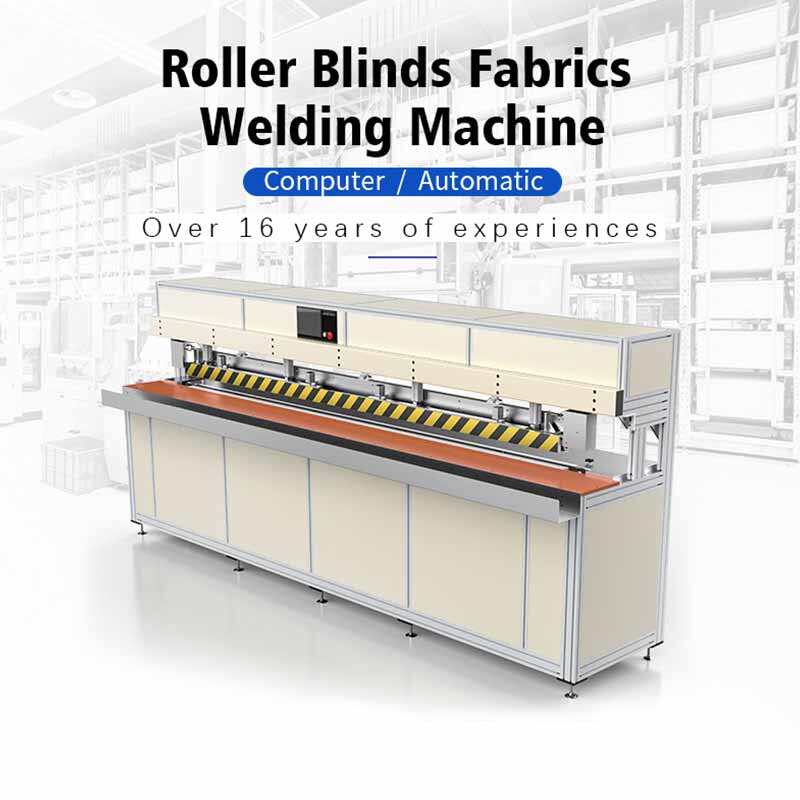Understanding Fabric Welding Technology
How Fabric Welding Machines Work
Fabric welding machines utilize an advanced fusion process to bond textiles without relying on traditional thread methods, which results in a seam that is both durable and water-resistant. This technique is especially beneficial in applications requiring high-stress resilience, such as outdoor equipment or technical textiles. The machines operate by applying heat and pressure to fabric layers, causing the materials to melt and fuse. This method eliminates needle perforations, strengthening the seam integrity. Understanding different heating methods—such as hot air, hot wedge, or high-frequency—can significantly aid in selecting the most suitable machine for varying fabric types and thicknesses. Whether you're dealing with delicate polyesters or rugged PVC, the technology adapts to maintain material quality and performance standards.
Types of Fabric Welding Equipment
Numerous types of fabric welding equipment cater to various material requirements, demonstrating the versatility of this technology. The most common machines include hot air welders, hot wedge welders, and high-frequency welding machines. Each offers unique benefits depending on specific project requirements. For instance, hot air welders are widely appreciated for their adaptability across industries such as inflatables and tarps. In contrast, hot wedge welders offer precise control over heat application, making them ideal for delicate materials like technical and medical textiles. Meanwhile, high-frequency machines excel in creating robust seams, crucial for heavy-duty industrial textiles. Understanding differences in operational size, heat source, and application area is essential for manufacturers selecting the right equipment for their production needs, whether for large-scale manufacturing or specialized applications.
Eco-Friendly Welding Methods vs. Traditional Sewing
Hot Air Welding for Lightweight Fabrics
Hot air welding emerges as a preferred choice for lightweight fabrics. It employs heated air to gently melt the edges of materials, offering a less intrusive alternative to traditional sewing methods. This process is environmentally beneficial due to its minimal energy consumption and lower pollutant production, reducing waste thread typically associated with sewing techniques. Studies have demonstrated that products assembled using hot air welding tend to have longer life cycles, significantly contributing to the sustainability of fabric applications. As industries continue to push for greener methods, hot air welding provides a viable and effective option.
Hot Wedge Welding for Precision
Hot wedge welding employs a wedge-shaped heater to fuse fabric layers, offering precise seam control. It is particularly effective in applications that demand clean, accurate welds, such as the construction of high-performance tents and tarps. This technique provides greater precision than other methods, which not only enhances the structural integrity of the fabric but also aligns with eco-friendly practices by minimizing waste. The focus on precise and reliable welds makes hot wedge welding a preferred choice in industries that prioritize both quality and environmental responsibility.
High-Frequency Welding in Advanced Applications
High-frequency welding is an advanced technique that uses electromagnetic energy to generate heat, allowing for the precise fusion of materials like PVC. This method is critical for industries requiring robust products, such as medical supplies, where seam strength and flexibility are paramount. Unlike traditional sewing methods, high-frequency welding reduces the need for secondary processes, thus supporting a more efficient and sustainable manufacturing approach. Its ability to produce clean, strong seams without the additional use of adhesives promotes an eco-friendly alternative, contributing to the growing demand for sustainable manufacturing solutions.
Key Features of Sustainable Fabric Welding Equipment
Precision Temperature and Speed Controls
Sustainable fabric welding equipment is designed with precision temperature and speed controls that are crucial for tailoring operations to different fabric types. These controls not only enhance the accuracy of the welding process but also contribute to energy efficiency by minimizing wasteful energy consumption. Advanced control systems in these machines translate to a reported energy use reduction of up to 30% compared to basic models, reflecting significant cost savings and a decreased environmental footprint.
Energy-Efficient Automation Systems
Energy-efficient automation systems are becoming a standard feature in modern fabric welding machines, aiming to streamline operations while curbing energy waste. Automated processes improve production speed and ensure consistent weld quality, which minimizes fabric waste. Studies indicate that implementing automation in welding processes can reduce operating costs by approximately 20%, underscoring the financial and environmental benefits of integrating such technology.
Compact and Portable Designs
Recent innovations in fabric welding equipment have led to the development of compact and portable designs, effectively serving small-scale operations and large manufacturing sites alike. These designs allow for easy transportation and setup, making advanced welding technology more accessible across various industries. By focusing on compact equipment that maintains full functionality, businesses can enhance workspace efficiency and reduce the carbon footprint associated with equipment transportation.
Environmental Benefits of Fabric Welding
Reducing Textile Waste
Fabric welding is a transformative technique that significantly reduces textile waste by minimizing leftover materials. Traditional sewing methods often require trimming, leading to excessive fabric waste. By contrast, fabric welding joins materials seamlessly, optimizing fabric usage and reducing waste considerably. Statistics show that businesses switching to fabric welding can cut down waste by up to 40%, offering a dual benefit of increased profit margins and a lower environmental impact. Embracing this approach helps companies meet their sustainability goals while enhancing resource efficiency in their production processes.
Lower Carbon Footprint Compared to Sewing
Switching to fabric welding can lead to a lower carbon footprint compared to conventional sewing methods. This innovative process requires less energy, thus generating fewer emissions throughout production. By reducing energy consumption, fabric welding aligns with eco-conscious trends, lowering fossil fuel usage and promoting sustainability in the textile industry. Many companies have reported improved sustainability metrics after adopting fabric welding methods, presenting a compelling case for similar transitions across the sector. This shift not only supports companies in achieving green initiatives but also enhances their reputation as environmentally responsible entities.
Innovations in Eco-Friendly Fabric Welding
Biodegradable and Plant-Based Materials
Recent advancements in fabric welding have revolutionized the industry through the introduction of biodegradable and plant-based materials. These innovations not only enhance the sustainability of the final products but also align with the growing consumer demand for eco-friendly solutions across multiple sectors. For instance, materials such as those derived from cacti and pineapple have shown a potential for reduced environmental impact, as evidenced by their successful adoption by various fashion brands. Research and development in this domain are fostering the growth of a new sustainable textiles segment, supporting practices that contribute to a circular economy—a model focused on minimizing waste and making the most of resources.
Advances in RF and Laser Welding Technologies
RF (Radio Frequency) and laser welding technologies stand at the cutting edge of eco-friendly fabric welding innovations. These technologies offer unmatched precision and efficiency compared to traditional methods, representing significant strides towards sustainable practices. By minimizing energy consumption and ensuring high-quality welding, these advancements reduce the necessity for additional processes that often generate waste. Industry experts highlight that integrating RF and laser technologies into textile manufacturing could transform the industry, promoting more sustainable production methods. This innovation underscores the fabric industry's ongoing commitment to reducing its environmental footprint while maintaining product quality.






